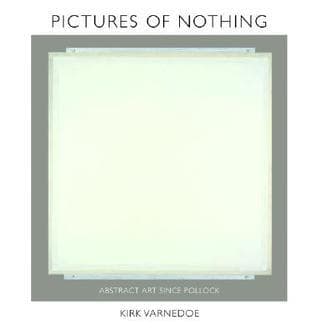
Book Review Summary: Pictures of Nothing: Abstract Art Since Pollock
Introduction
"Pictures of Nothing: Abstract Art Since Pollock" by Kirk Varnedoe is a captivating exploration of abstract art since the era of Jackson Pollock. In this book, Varnedoe, a renowned art historian, challenges the skeptical attitudes and misunderstandings surrounding abstract art. He delves into the history and biography of abstract art, decade by decade, while also examining the distinctions between abstraction and representation, modernism and postmodernism, and minimalism and pop. With brilliance, passion, and humor, Varnedoe presents a compelling argument for the value and significance of abstract art.
About Kirk Varnedoe
Kirk Varnedoe, the author of "Pictures of Nothing: Abstract Art Since Pollock," was an American art historian known for his lucidly pragmatic and philosophical approach to art history. As the Chief Curator of Painting and Sculpture at the Museum of Modern Art from 1988 to 2001, Varnedoe played a significant role in shaping the understanding of modern and contemporary art. He was also a Professor of the History of Art at the Institute for Advanced Study at Princeton and a Professor of Fine Arts at the New York University Institute of Fine Arts. Varnedoe's expertise and passion for art shine through in his writing, making him a respected figure in the art world.
Analysis of Views
-
Engaging and Accessible: Readers appreciate the book's ability to engage them with its clear and accessible writing style. The author's tender patience and love for the art make it easy for readers to understand and appreciate abstract art.
-
Comprehensive Coverage: The book covers a broad range of abstract art from the Pollock era to the present day, providing readers with a comprehensive understanding of the subject matter. It covers various movements such as minimalism, pop art, and contemporary abstraction.
-
Challenging Conventional Wisdom: Varnedoe challenges conventional wisdom about abstraction by examining the relationship between abstraction and representation, modernism and postmodernism, and minimalism and pop. His arguments are convincing, making readers question their own assumptions about abstract art.
-
Expanding Knowledge: Readers find the book valuable for expanding their knowledge of abstract art. It helps them appreciate abstract art on a deeper level and understand its significance in contemporary art history.
-
Personal Connection: Some readers express a personal connection with the book, finding it inspiring and thought-provoking. They appreciate Varnedoe's ability to convey his love for abstract art, which resonates with them as well.
Reasons for Recommendation
-
Insightful Analysis: Readers recommend "Pictures of Nothing" for its insightful analysis of abstract art. The author's scholarly approach to examining abstract art makes it a compelling read for those interested in understanding its history and significance.
-
Engaging Writing Style: Varnedoe's engaging writing style makes the book enjoyable to read. His passion for art shines through in his words, making readers feel connected to the subject matter.
-
Comprehensive Coverage: The book's comprehensive coverage of abstract art from various periods and movements makes it a valuable resource for anyone interested in exploring abstract art further. It provides readers with a broad understanding of the subject matter.
-
Challenging Conventional Wisdom: The book challenges conventional wisdom about abstract art, encouraging readers to think critically about their own assumptions and beliefs. This aspect of the book adds depth to the reading experience.
Reasons for Not Recommendation
-
Limited Visual Experience: Some readers mention that while the book provides an intellectual understanding of abstract art, it lacks a visual experience that can be gained by seeing these works in person. This limitation may hinder readers who prefer to engage with art through direct observation.
-
Lack of Focus on Minimalism: A few readers express disappointment that the book does not delve deeply into minimalism as a significant movement in contemporary abstract art. They feel that minimalism deserves more attention in the context of abstract art history.
Conclusion
"Pictures of Nothing: Abstract Art Since Pollock" by Kirk Varnedoe is a highly recommended book for those interested in exploring the world of abstract art. With its engaging writing style, comprehensive coverage, challenging analysis, and personal connection, this book offers readers a deeper understanding of abstract art's history and significance. While some limitations may exist in terms of visual experience and minimalism coverage, overall, "Pictures of Nothing" is a valuable resource for anyone seeking to expand their knowledge and appreciation of abstract art.